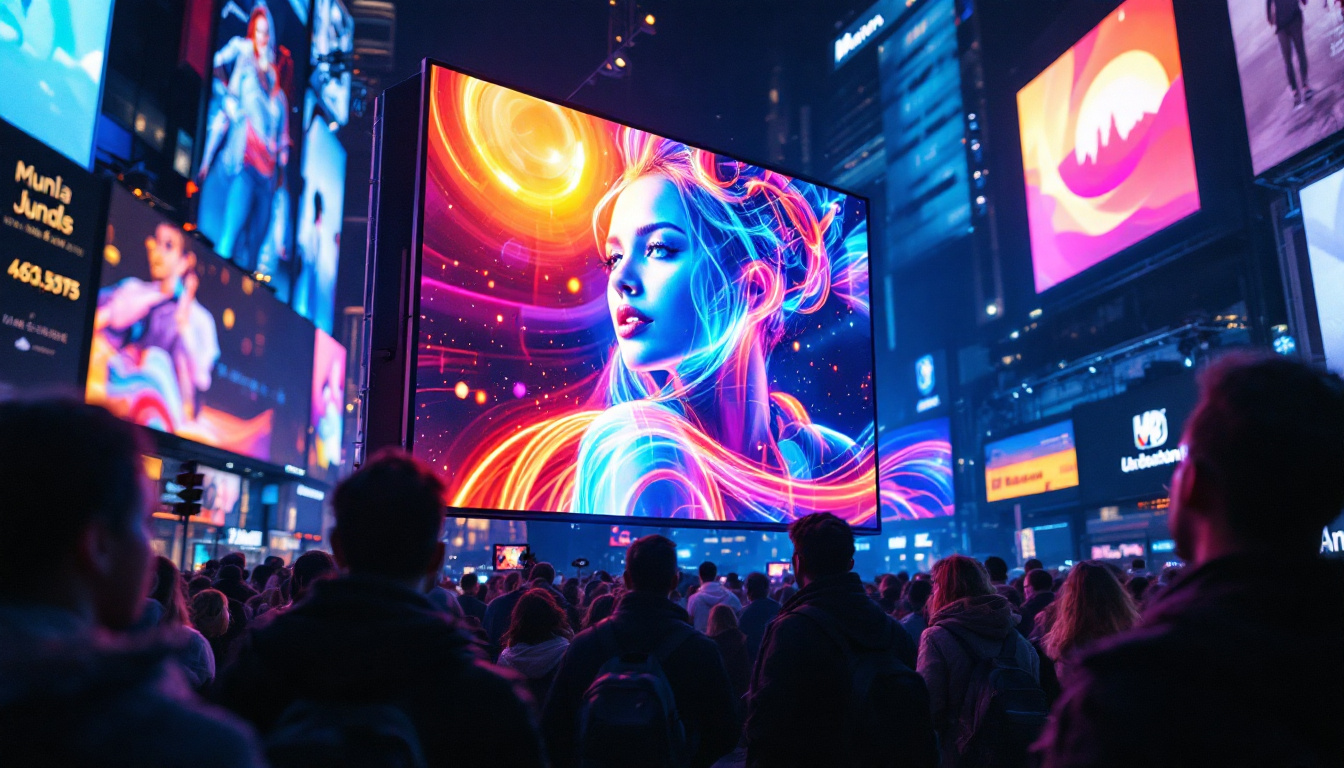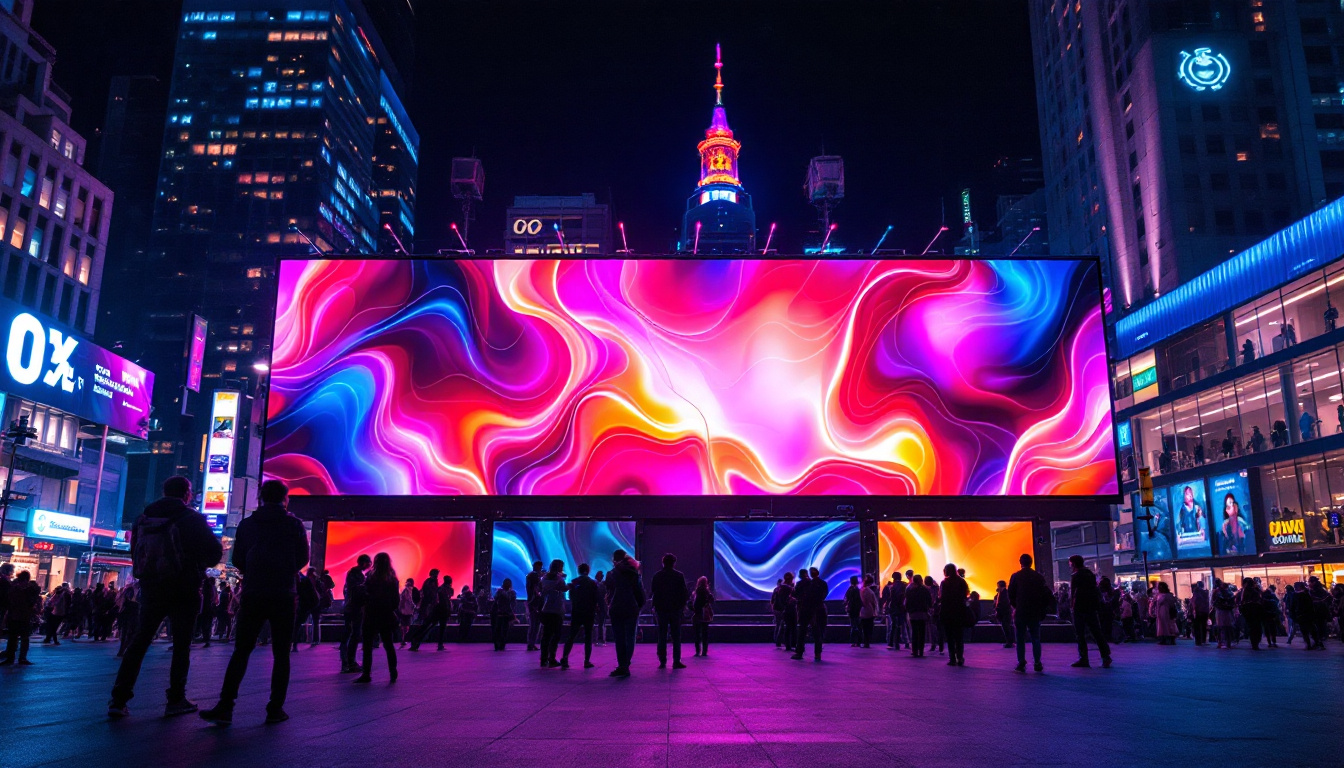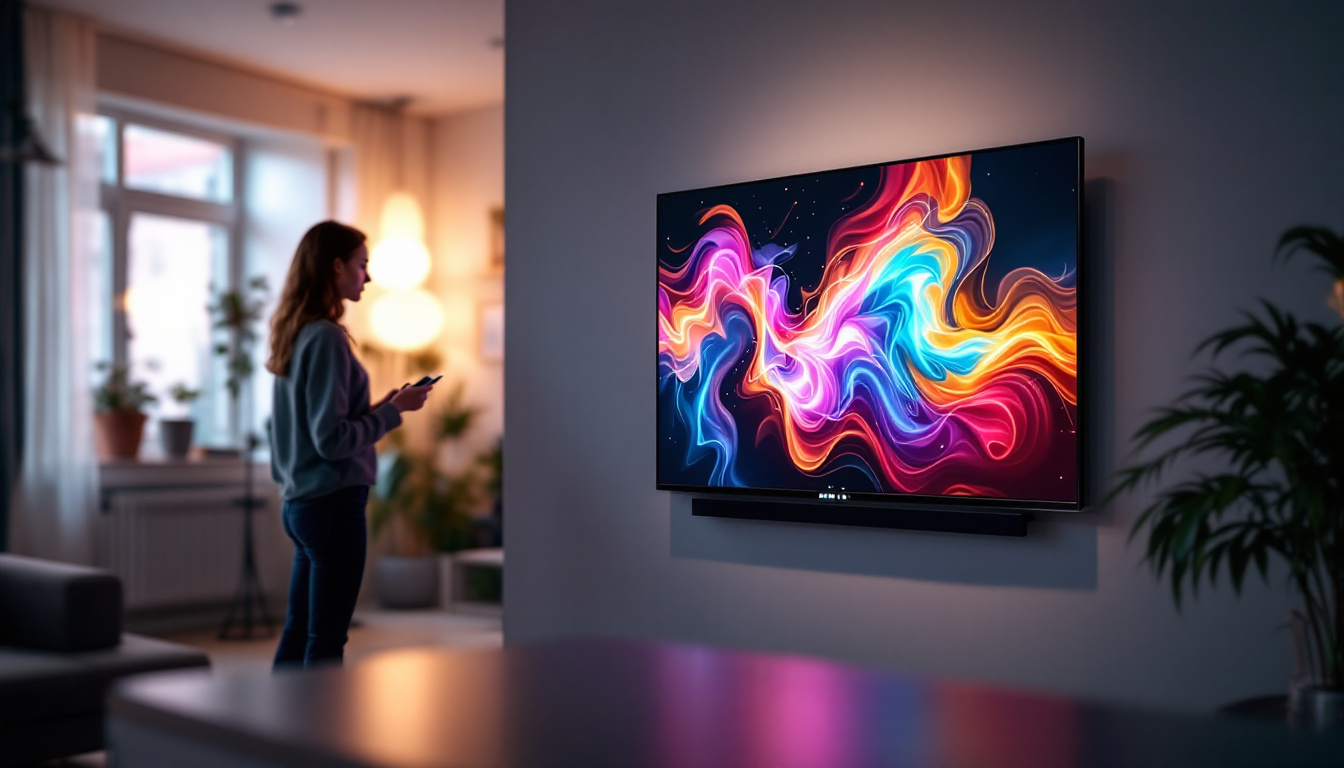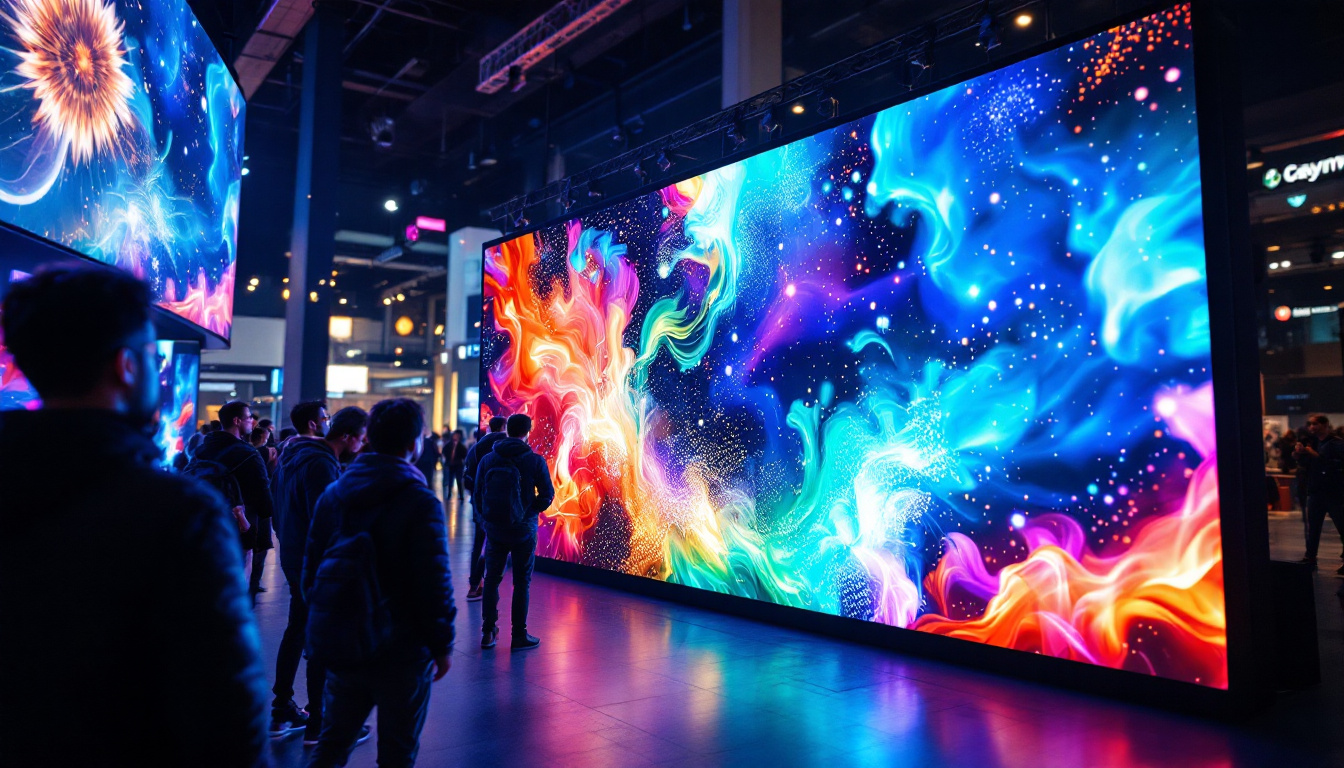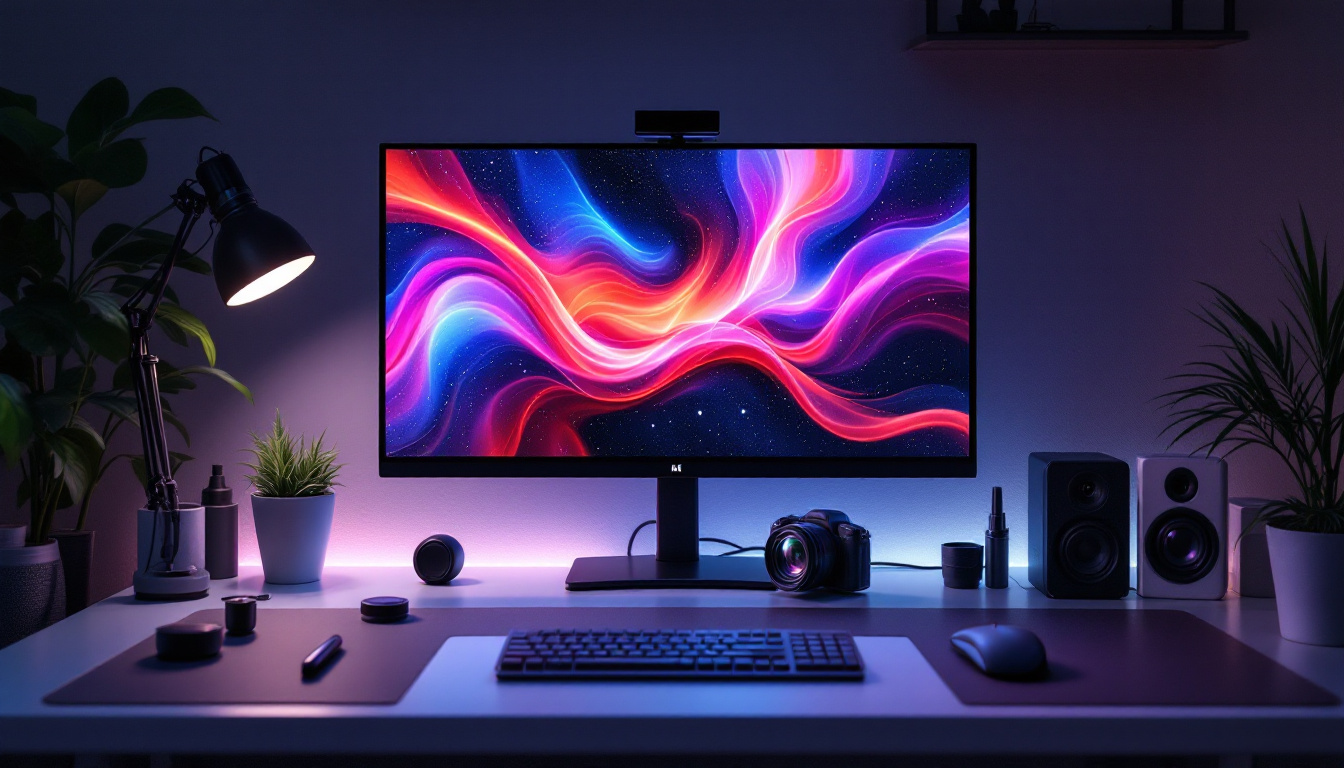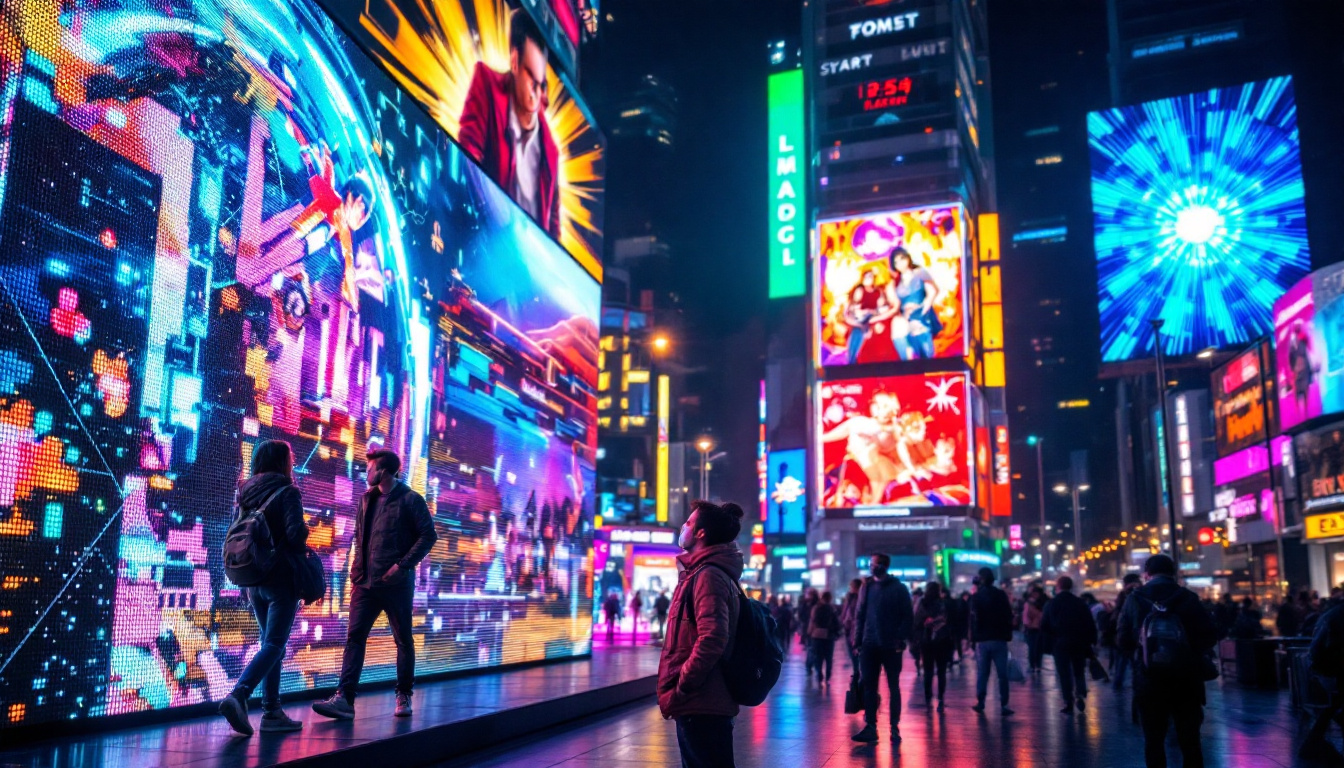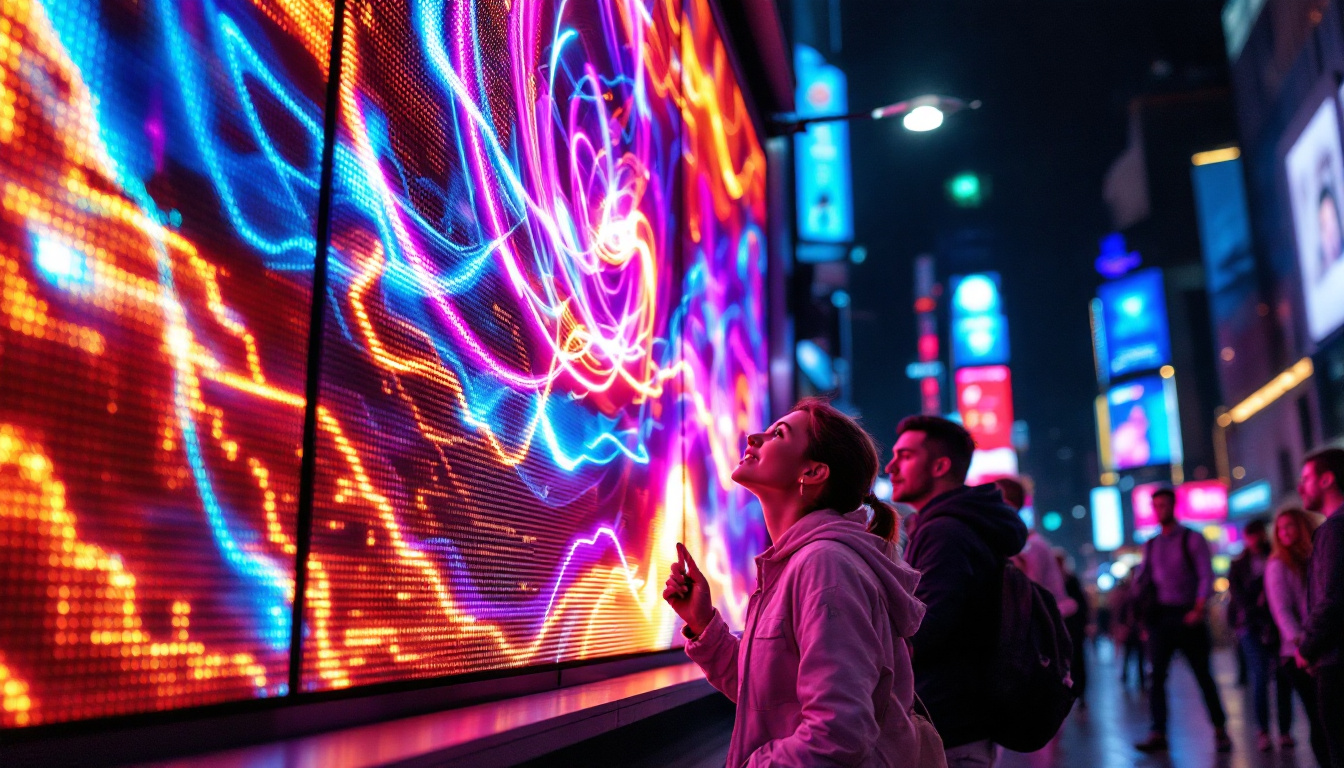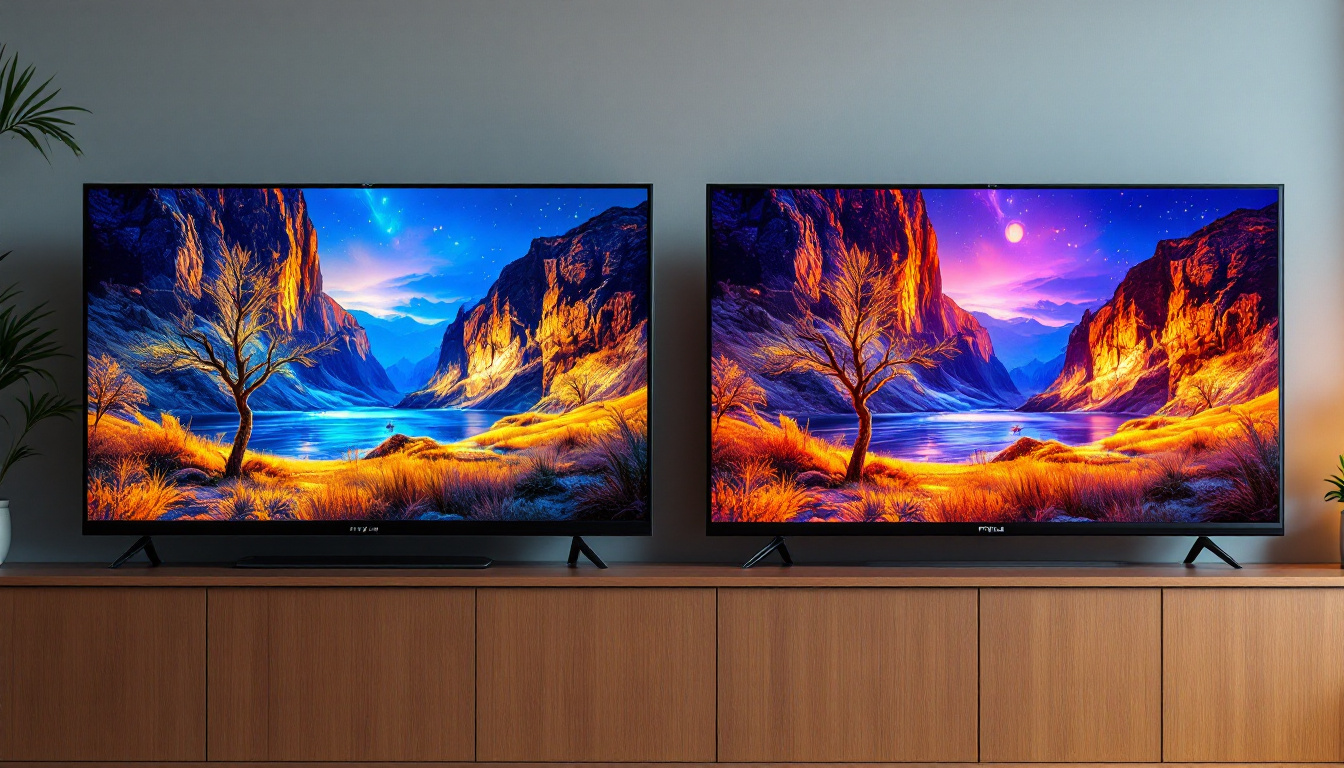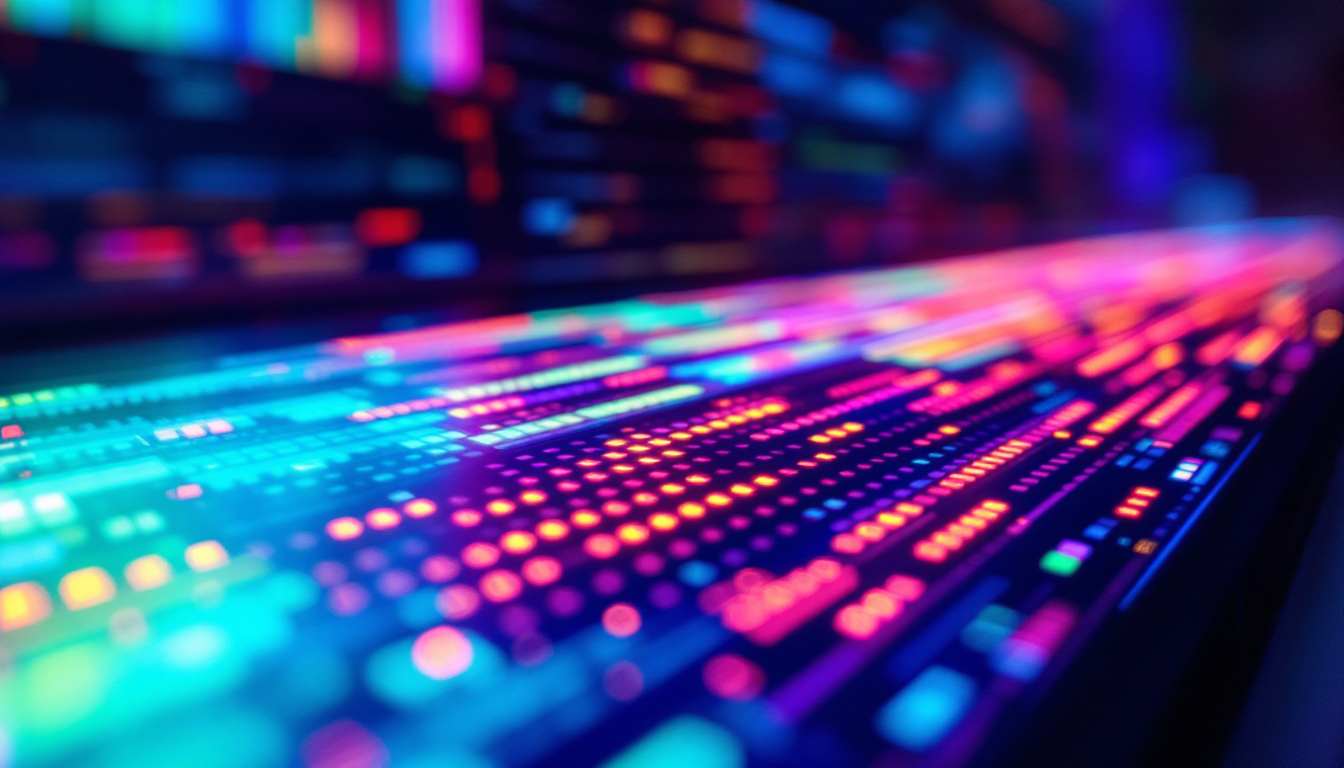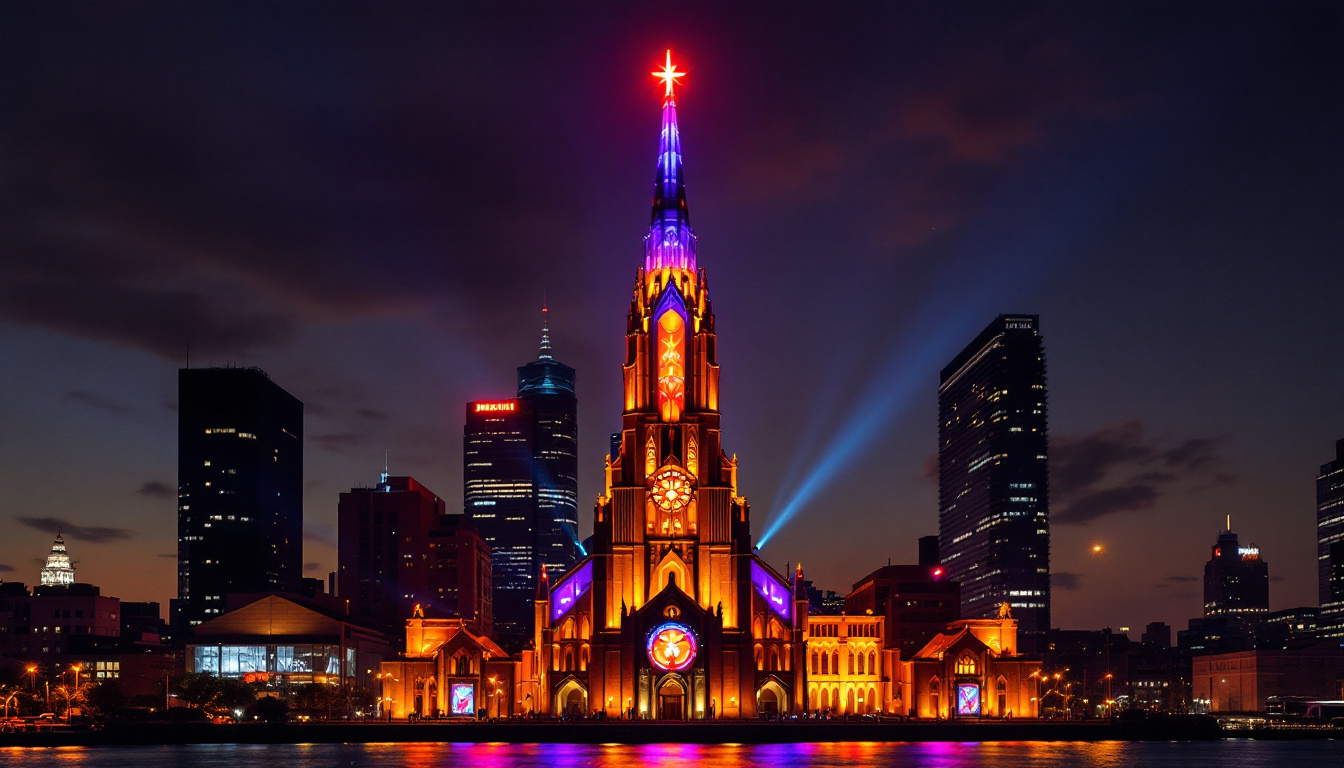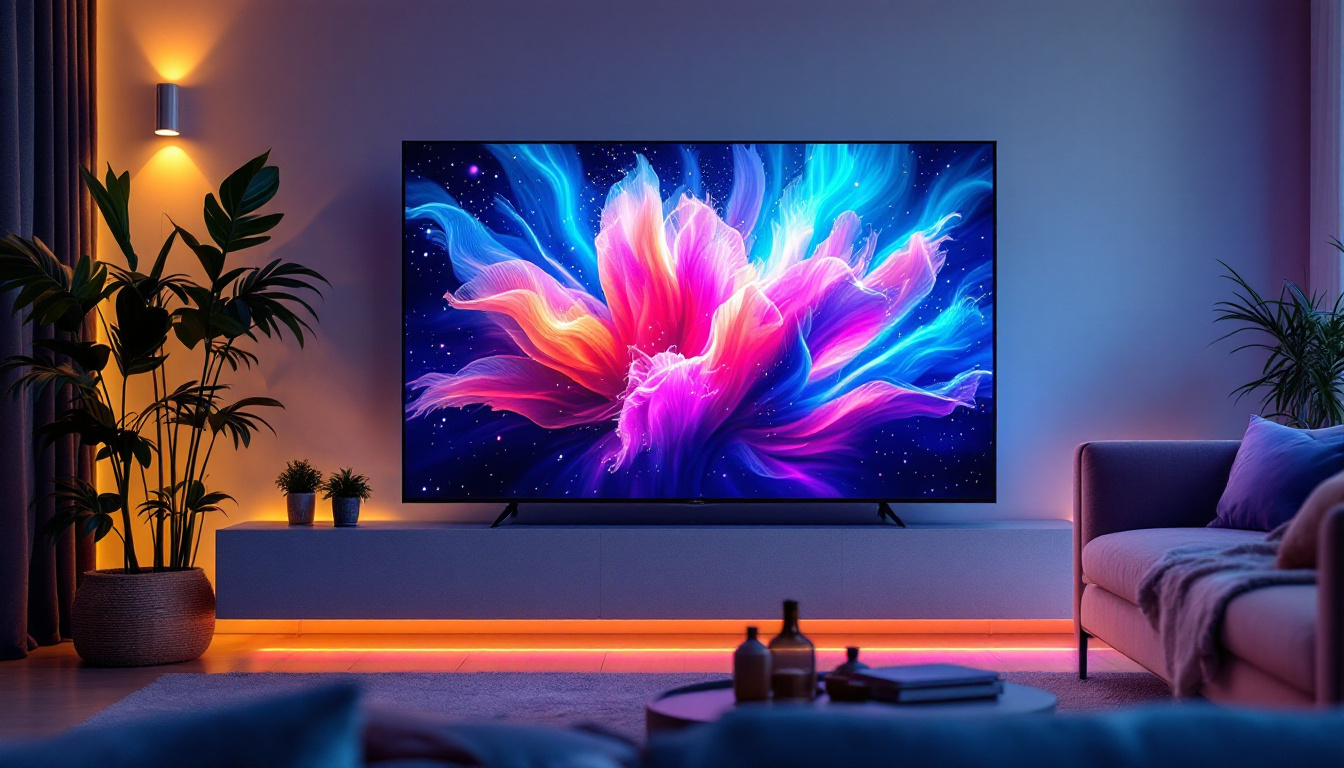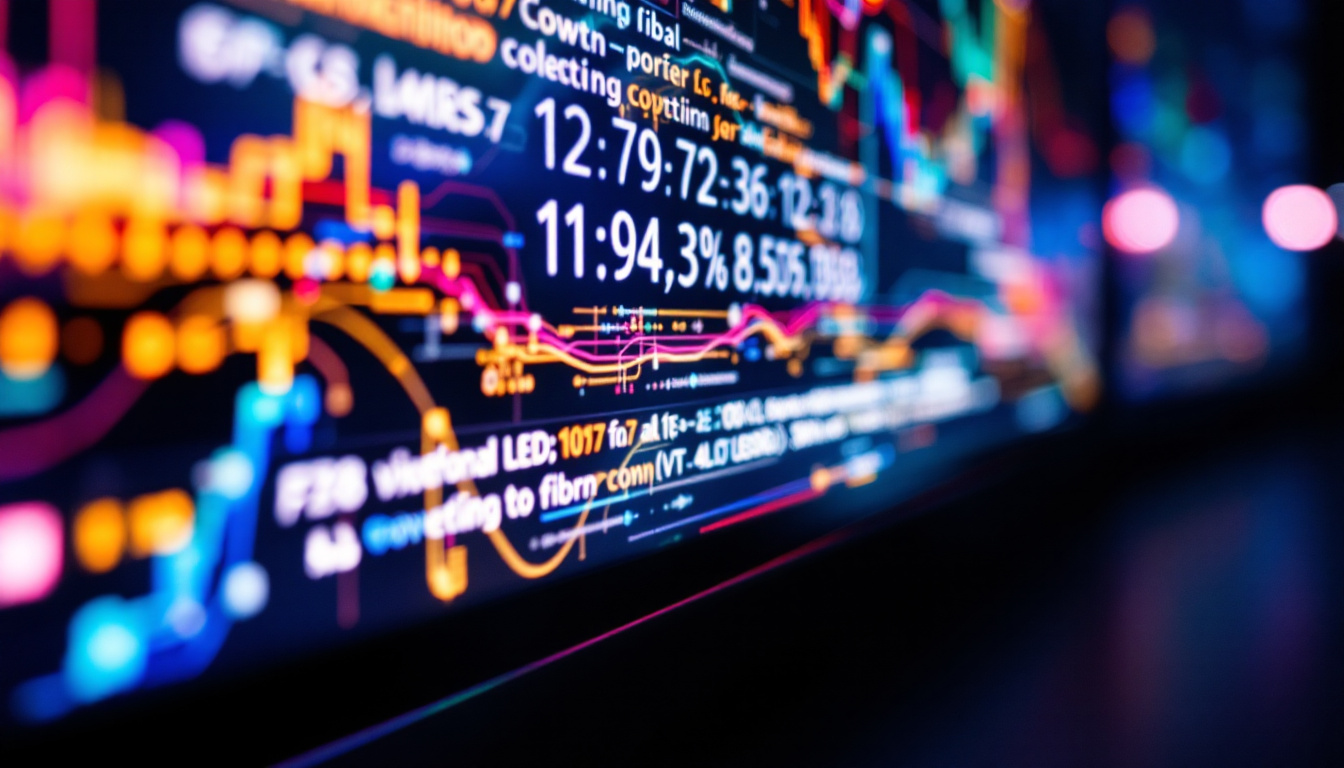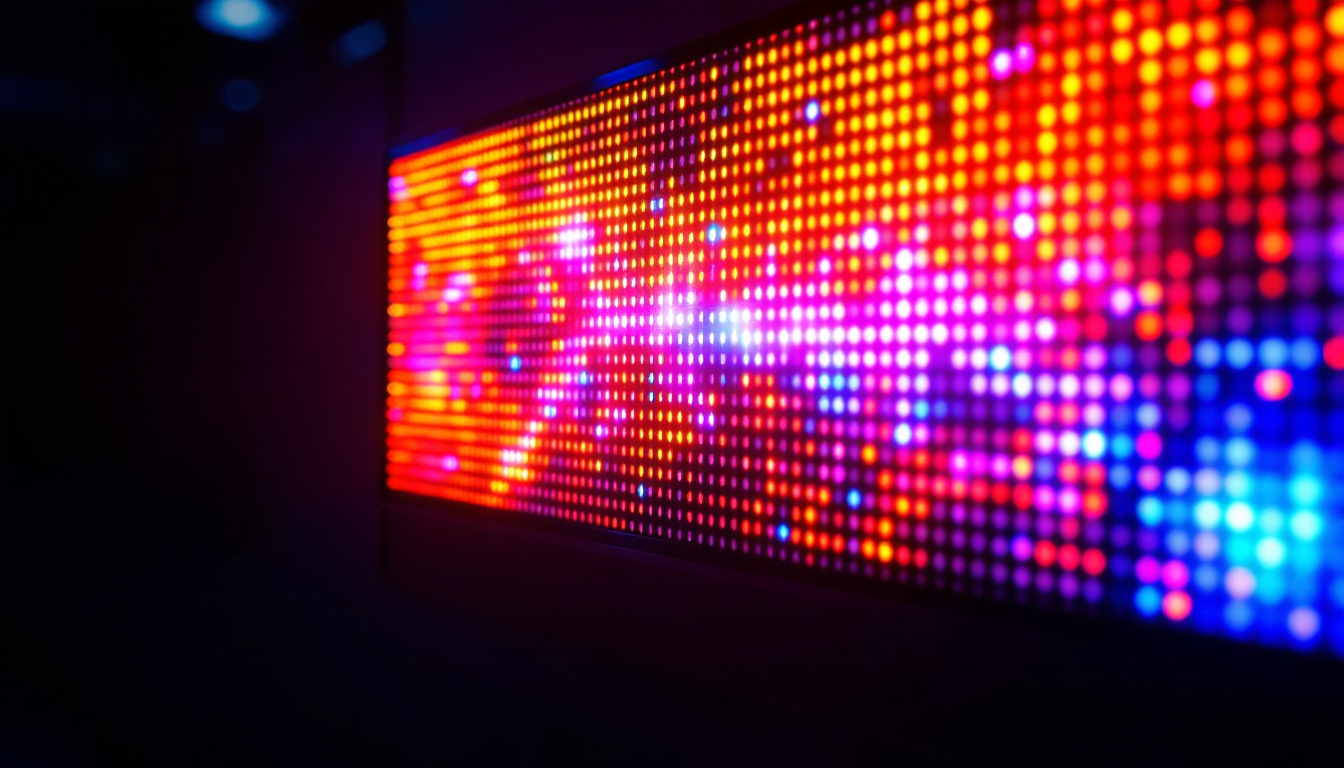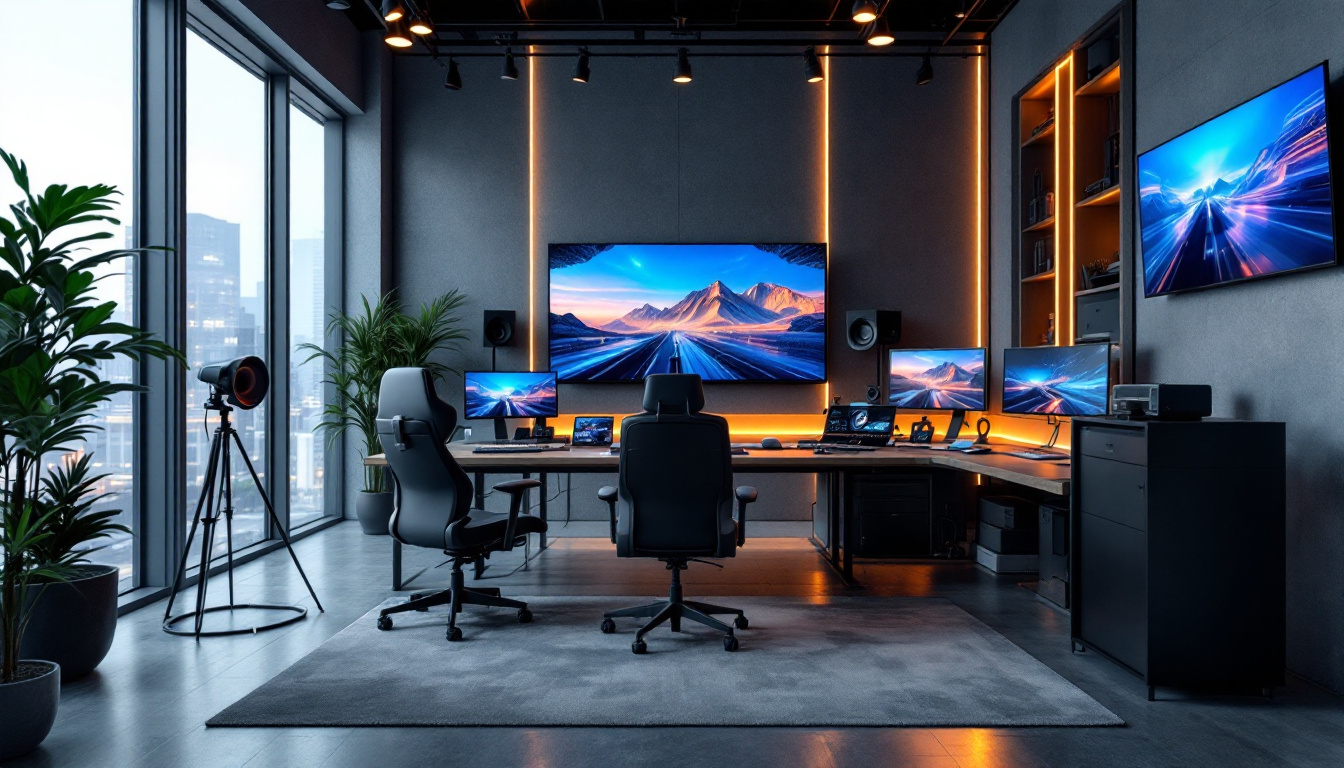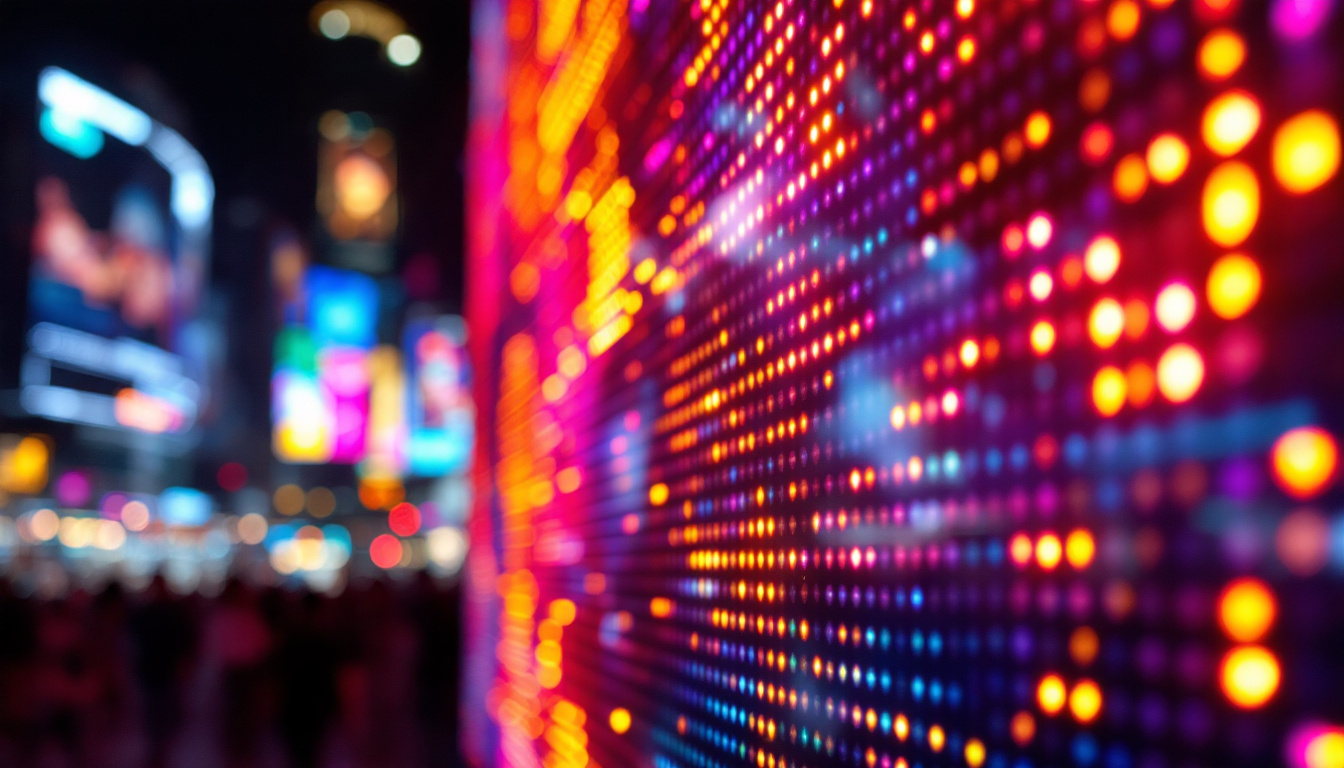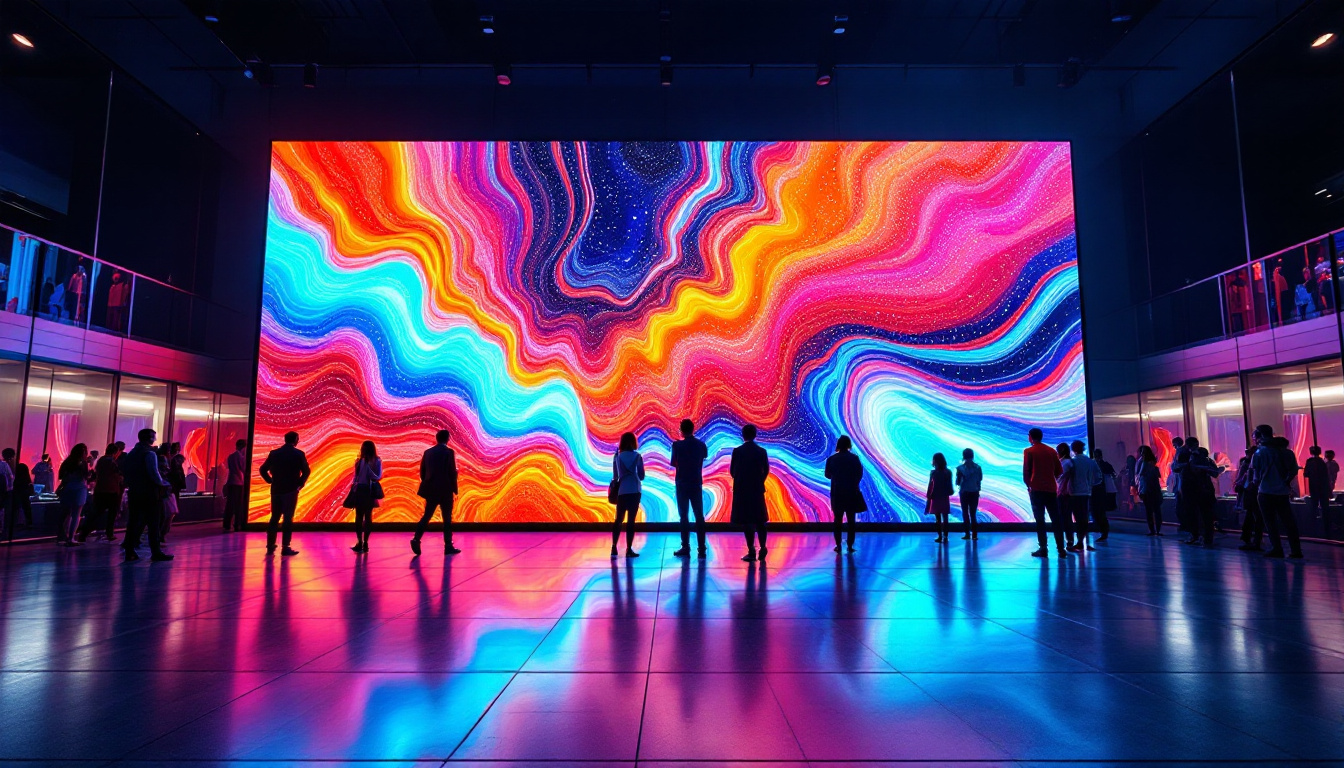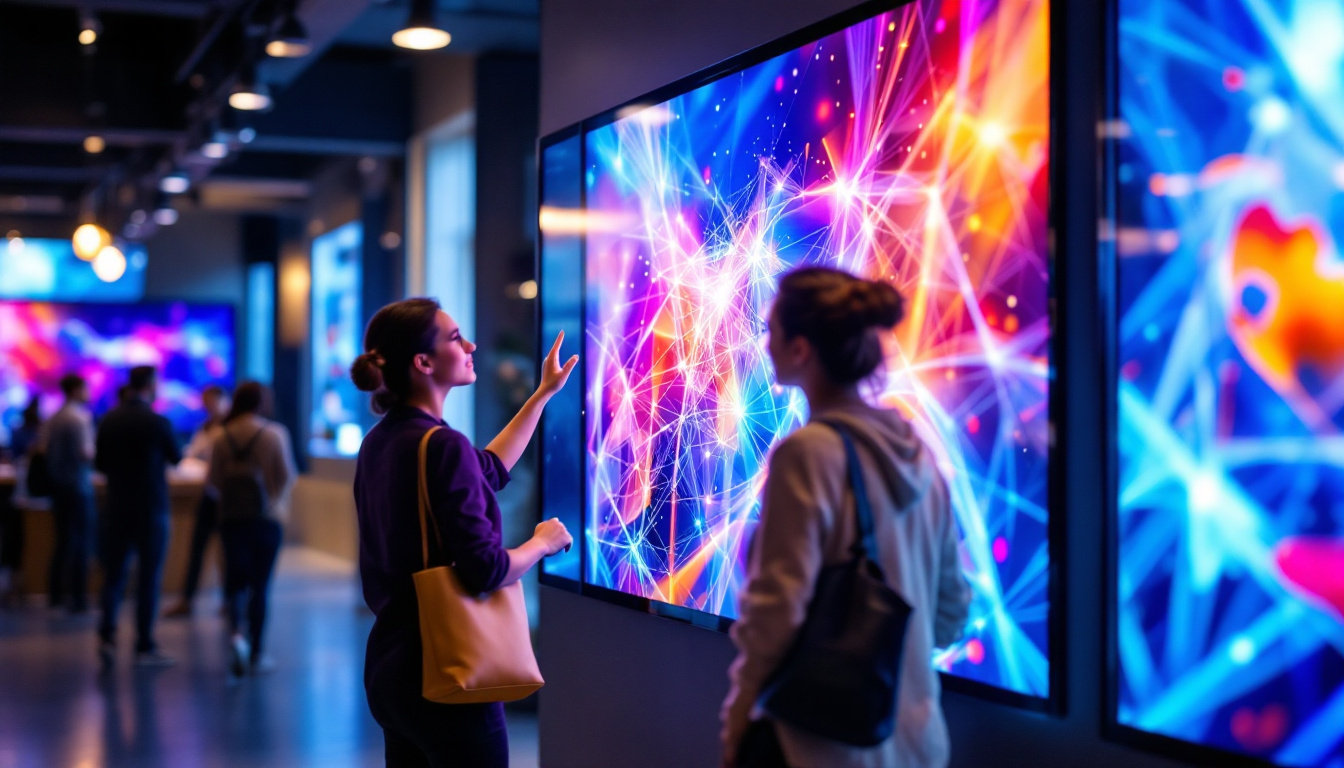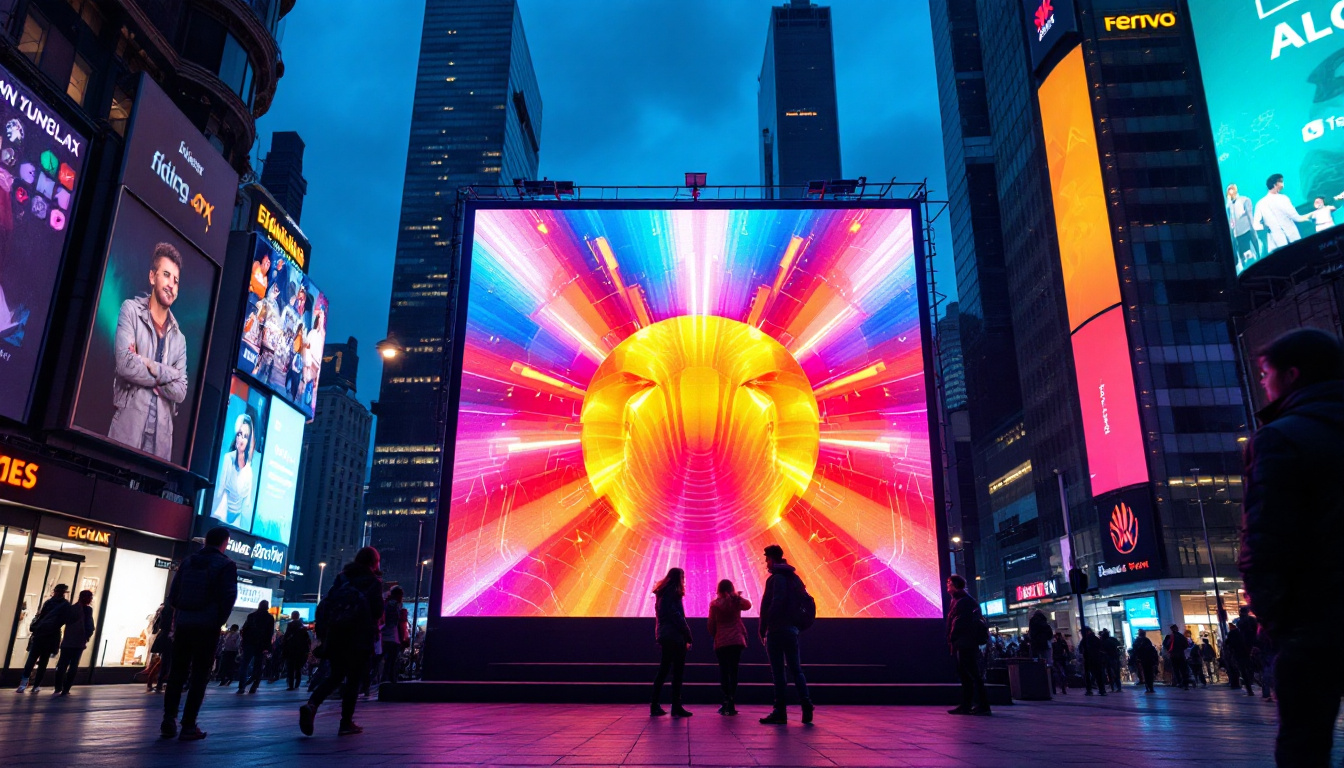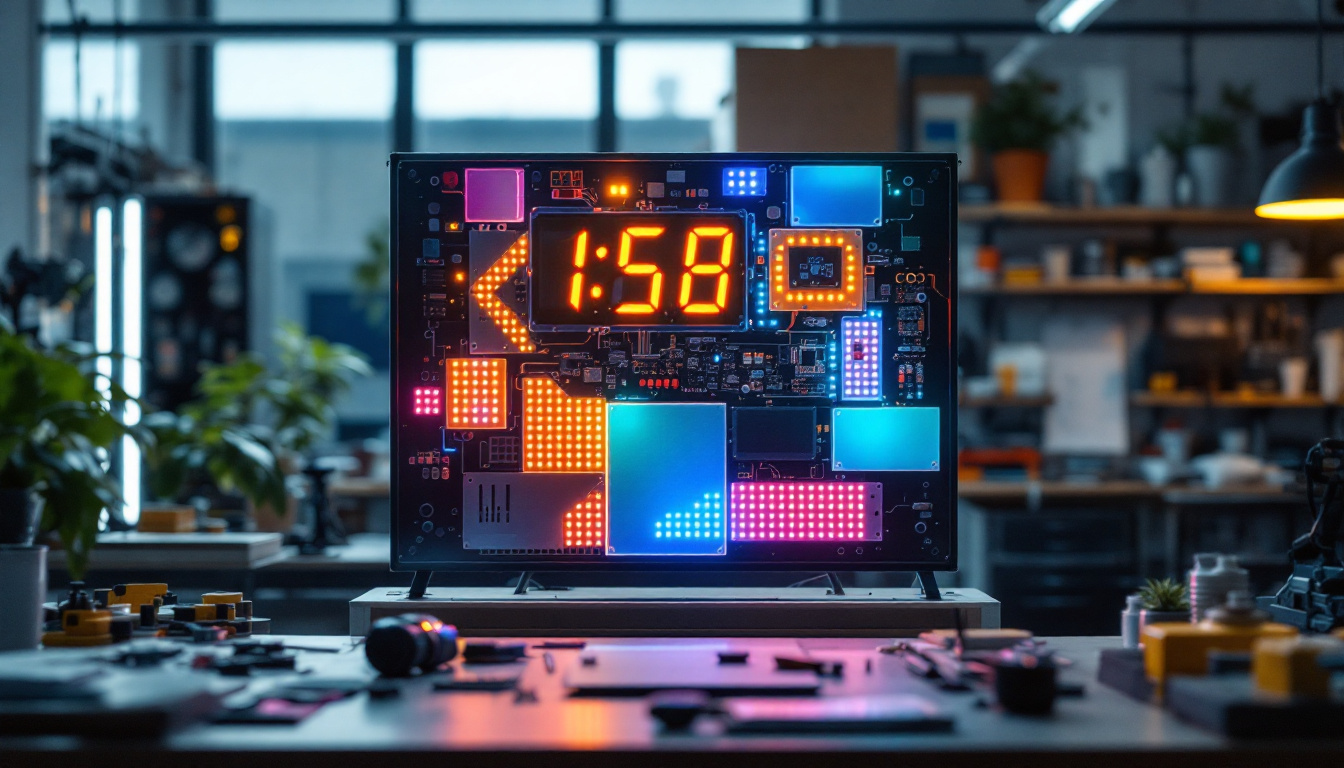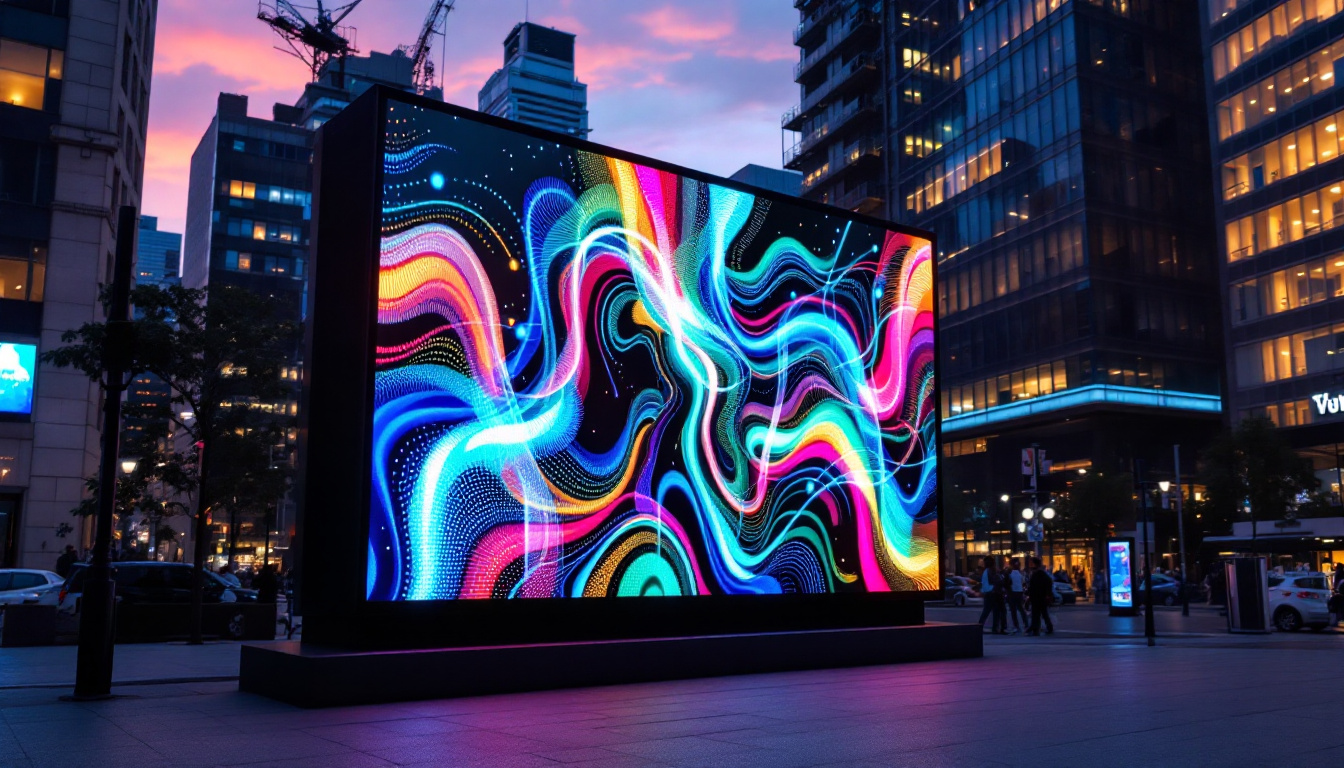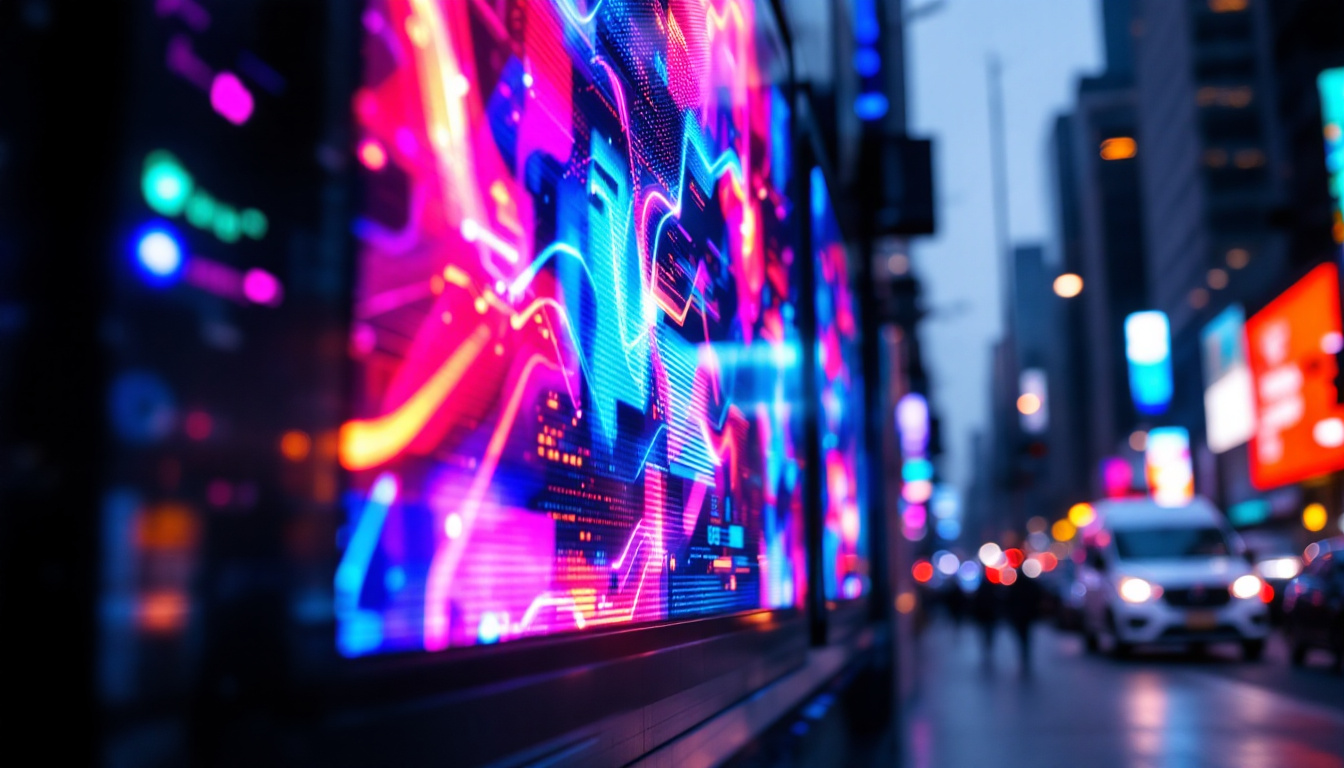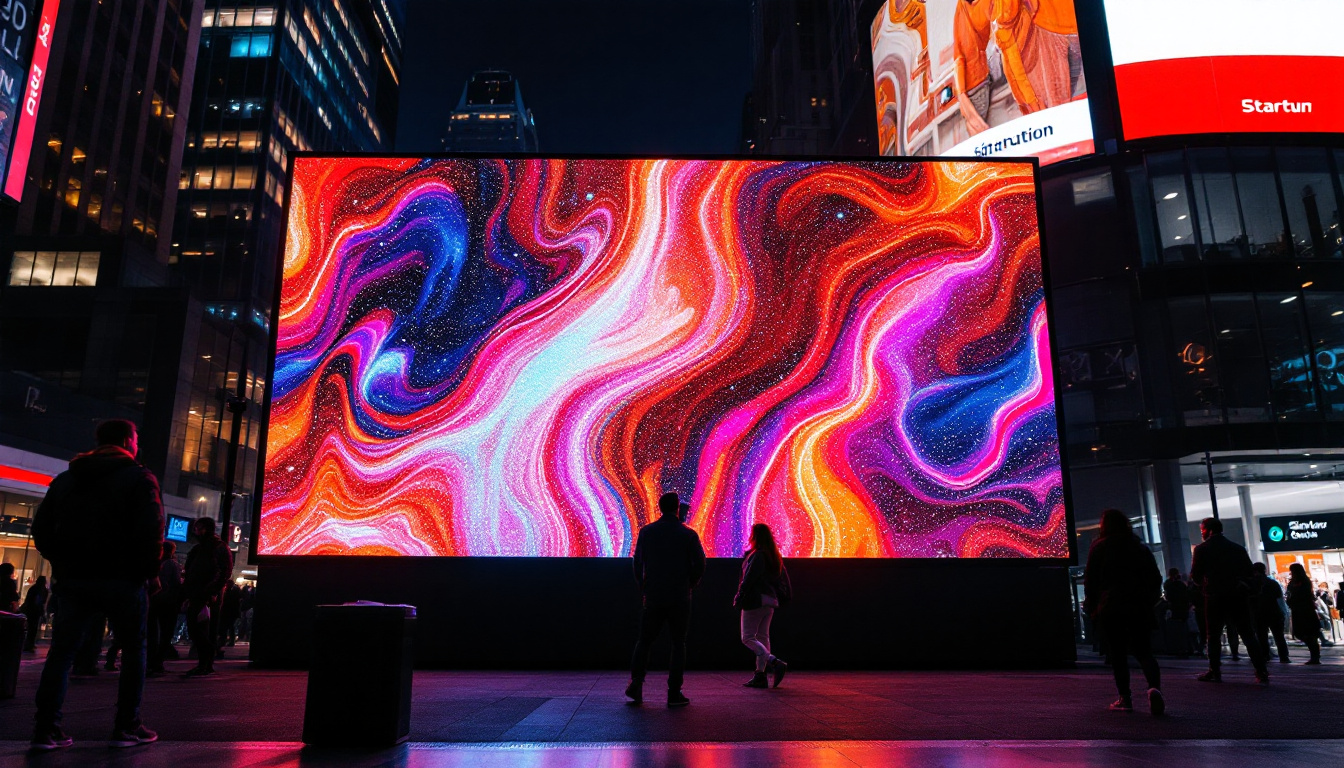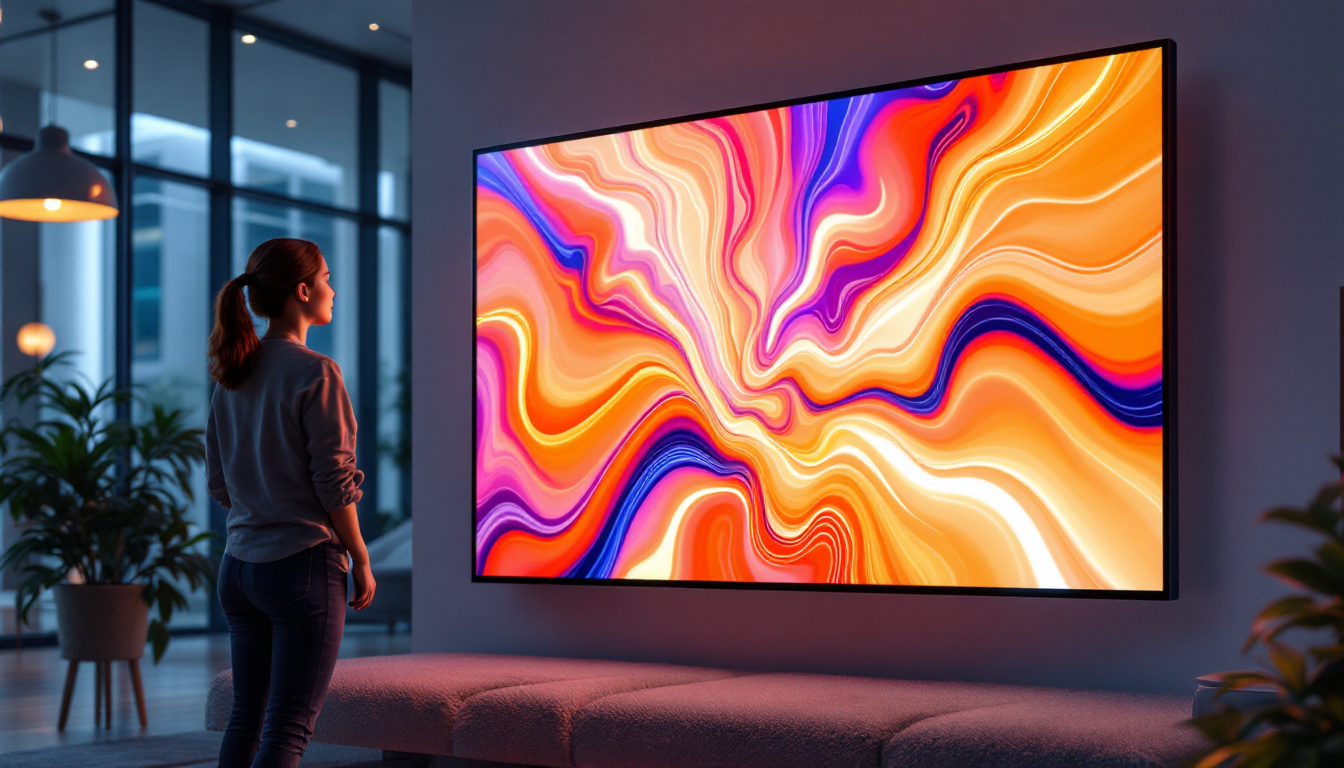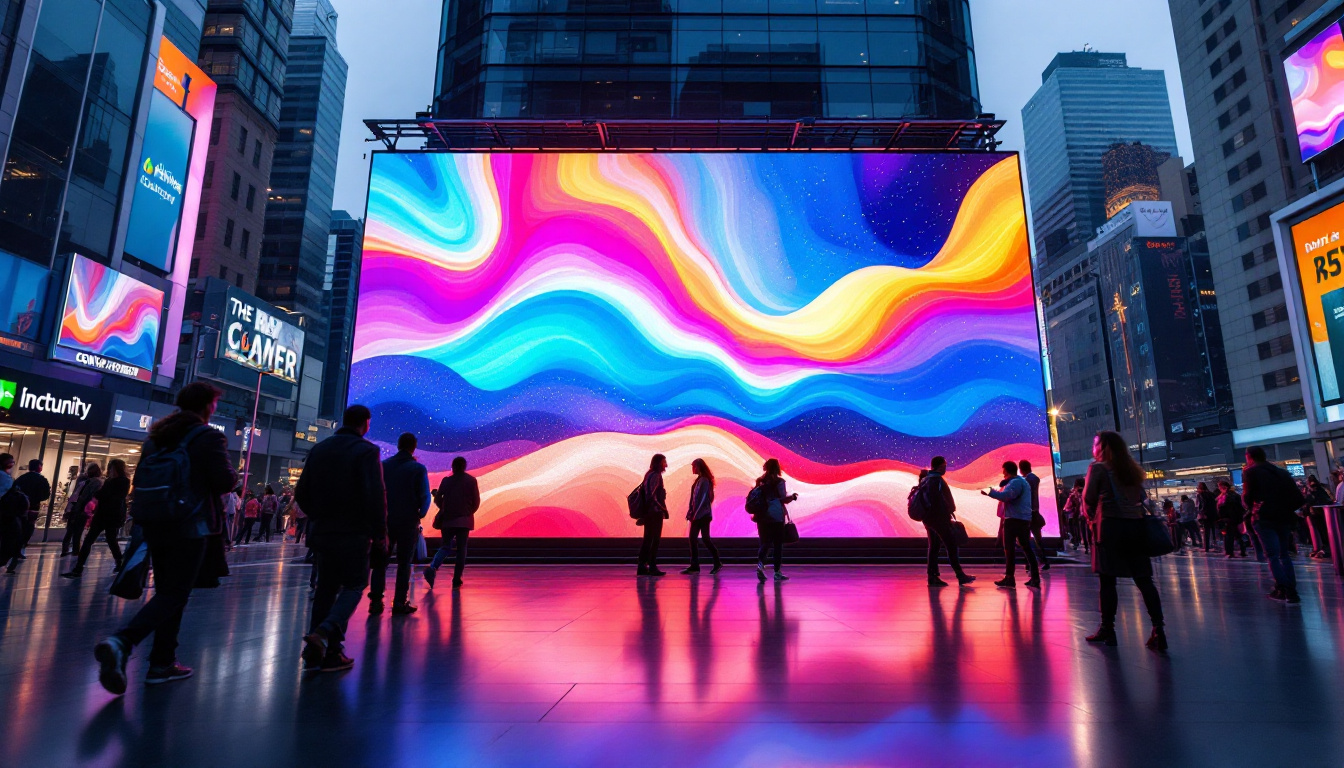In today’s digital age, LED display screens have become ubiquitous, transforming how information is conveyed across various platforms. From advertising billboards to indoor screens in venues, LED technology has revolutionized visual communication. This article delves into the intricacies of LED displays, exploring their types, advantages, and the manufacturers behind these innovative technologies.
Understanding LED Technology
Light Emitting Diode (LED) technology is at the heart of modern display screens. Unlike traditional LCD screens that rely on backlighting, LED displays utilize individual diodes to emit light, resulting in brighter and more vibrant images. This technology not only enhances visual quality but also contributes to energy efficiency. The longevity of LED displays is another significant advantage, with many units boasting lifespans that can exceed 50,000 hours, making them a cost-effective solution for both consumers and businesses alike.
How LED Displays Work
LED displays consist of numerous tiny diodes arranged in a matrix. Each diode can be turned on or off independently, allowing for the creation of dynamic images and videos. When combined, these diodes produce a full-color spectrum, enabling the display of intricate graphics and animations. The technology behind LED displays has evolved rapidly, with advancements such as RGB (Red, Green, Blue) color mixing, which allows for a broader range of colors and more accurate color reproduction.
The process begins with a controller that receives data from a source, such as a computer or media player. This data is then processed and translated into signals that dictate which diodes should light up. The result is a seamless visual experience that can adapt to various content types, from static images to high-definition videos. Additionally, the integration of smart technology into LED displays has opened up new possibilities, allowing for features like touch sensitivity and interactivity, which enhance user engagement and create immersive experiences.
Types of LED Displays
LED displays come in various forms, each tailored to specific applications. The main types include:
- Indoor LED Displays: These screens are designed for close viewing and typically feature higher pixel densities, resulting in sharper images. They are commonly used in conference rooms, retail spaces, and entertainment venues. The ability to display high-resolution content makes them ideal for presentations and advertising, where clarity is paramount.
- Outdoor LED Displays: Built to withstand weather conditions, outdoor displays are larger and have lower pixel densities. They are ideal for billboards, stadiums, and public transportation systems. These displays often incorporate protective features such as waterproofing and UV resistance, ensuring that they remain functional and visually appealing in various environmental conditions.
- Transparent LED Displays: These innovative screens allow light to pass through, making them perfect for retail environments where visibility is crucial. They can be integrated into windows and glass surfaces. This unique characteristic not only enhances aesthetic appeal but also enables businesses to showcase products behind the display while simultaneously advertising promotions and information.
The Advantages of LED Displays
LED displays offer numerous advantages over traditional display technologies. Their unique characteristics make them a popular choice for various applications.
Energy Efficiency
One of the most significant benefits of LED technology is its energy efficiency. LED displays consume less power compared to other display types, reducing operational costs and environmental impact. This efficiency is particularly important for large-scale installations, where energy savings can be substantial over time. Moreover, many LED displays are designed with intelligent power management systems that adjust brightness based on ambient light conditions, further optimizing energy consumption and extending the lifespan of the display.
Brightness and Visibility
LED displays are known for their exceptional brightness, making them easily visible in various lighting conditions. This feature is especially crucial for outdoor displays, where sunlight can wash out images on traditional screens. The ability to maintain visibility in bright environments ensures that messages reach their intended audience effectively. Additionally, the color accuracy and contrast ratios of LED displays enhance the overall viewing experience, allowing for vibrant visuals that capture attention and convey information clearly, whether in advertising, public announcements, or entertainment venues.
Longevity and Durability
LED displays have a longer lifespan than conventional displays, often lasting up to 100,000 hours. This longevity translates to lower maintenance costs and less frequent replacements. Additionally, LED technology is more resistant to shock and vibration, making it suitable for high-traffic areas and outdoor environments. The robust construction of LED displays often includes weatherproofing and UV protection, ensuring that they can withstand harsh conditions without compromising performance. This durability not only enhances their reliability but also makes them a smart investment for businesses looking to maximize their return on investment over time.
Versatility in Applications
Another compelling advantage of LED displays is their versatility in various applications. From large-scale billboards to small digital signage in retail environments, LED technology can be adapted to fit a wide range of needs. They can be configured in different shapes and sizes, allowing for creative installations that can enhance the aesthetic appeal of a space. Furthermore, with advancements in technology, LED displays can now support dynamic content, enabling businesses to update messages in real-time and engage audiences more effectively. This adaptability makes them an ideal choice for advertising, information dissemination, and even artistic displays, showcasing the endless possibilities that LED technology offers.
Leading LED Display Screen Manufacturers
The market for LED displays is competitive, with several manufacturers leading the charge in innovation and quality. Understanding the key players can provide insights into the technology’s evolution and future trends. As LED technology continues to advance, manufacturers are not only enhancing display quality but also integrating smart features that cater to the growing demand for interactive and immersive experiences.
Major Players in the Industry
Some of the most prominent LED display manufacturers include:
- Samsung: Renowned for its cutting-edge technology, Samsung offers a wide range of LED display solutions, from small indoor screens to massive outdoor billboards. Their commitment to research and development has led to the introduction of MicroLED technology, which promises to revolutionize display quality with higher contrast ratios and superior brightness.
- LG Electronics: LG is a leader in display technology, providing high-quality LED screens known for their vibrant colors and energy efficiency. Their OLED displays are particularly notable, as they deliver stunning visuals with deep blacks and a wide color gamut, making them a favorite for both commercial and residential applications.
- NEC Display Solutions: NEC specializes in commercial display solutions, offering a variety of LED products tailored for business and public spaces. Their focus on reliability and service has made them a trusted partner for many organizations looking to enhance their visual communication strategies.
Emerging Manufacturers
While established companies dominate the market, several emerging manufacturers are making a name for themselves by focusing on niche applications and innovative designs. These companies often prioritize customization and customer service, catering to specific industry needs. For instance, some new entrants are developing flexible LED screens that can be shaped to fit unique architectural designs, allowing for more creative advertising solutions in urban environments.
Additionally, advancements in technology have enabled these emerging manufacturers to offer competitive pricing without compromising quality. Many of them are leveraging online platforms to reach customers directly, providing tailored solutions that address specific requirements in sectors such as retail, entertainment, and events. This shift towards direct engagement not only fosters innovation but also encourages a more dynamic market landscape, where customer feedback can rapidly influence product development and service offerings.
Applications of LED Displays
The versatility of LED displays allows them to be used in a wide range of applications, enhancing communication and engagement across various sectors.
Advertising and Marketing
One of the most common uses of LED displays is in advertising. Billboards and digital signage in retail environments leverage the dynamic capabilities of LED technology to attract attention and convey messages effectively. The ability to change content in real-time allows advertisers to tailor their messages based on audience demographics and time of day.
Entertainment and Events
LED displays play a crucial role in the entertainment industry, from concerts to sporting events. Large-scale screens provide audiences with an immersive experience, displaying live footage, graphics, and advertisements. Their high brightness and color accuracy ensure that every detail is captured, enhancing the overall atmosphere of events.
Transportation and Public Information
In public transportation systems, LED displays are used for real-time information dissemination. Bus and train stations utilize these screens to provide updates on schedules, delays, and other essential information. Their visibility and durability make them ideal for high-traffic areas, ensuring that commuters receive timely updates.
Future Trends in LED Display Technology
As technology continues to evolve, LED displays are expected to undergo significant advancements. Understanding these trends can provide valuable insights into the future of visual communication.
Integration with Smart Technologies
The integration of LED displays with smart technologies is on the rise. As cities become smarter, LED displays will play a vital role in urban infrastructure, providing real-time information and enhancing connectivity. This trend includes the development of interactive displays that engage users and provide personalized experiences.
Advancements in Transparency and Flexibility
Transparent and flexible LED displays are gaining traction, offering new possibilities for design and application. These innovative screens can be integrated into various surfaces, allowing for creative advertising and information dissemination. As manufacturers continue to refine this technology, the potential for unique applications will expand.
Sustainability Initiatives
With growing concerns about environmental impact, manufacturers are focusing on sustainability in LED display production. This includes using eco-friendly materials and improving energy efficiency. As consumers become more environmentally conscious, sustainable practices will likely become a significant selling point for LED display manufacturers.
Conclusion
LED display screens have transformed the landscape of visual communication, offering unparalleled brightness, energy efficiency, and versatility. As technology advances, the applications for LED displays continue to expand, making them an essential tool for businesses and organizations across various sectors. Understanding the key manufacturers and emerging trends in this field can provide valuable insights for those looking to invest in LED technology.
As the demand for high-quality visual communication grows, LED display manufacturers will play a critical role in shaping the future of how information is shared and experienced. The continued evolution of LED technology promises exciting possibilities, ensuring that these displays remain at the forefront of innovation.
Explore Cutting-Edge LED Display Solutions with LumenMatrix
Ready to elevate your visual communication strategy with the latest in LED display technology? LumenMatrix is at the forefront of innovation, offering a diverse range of LED display solutions tailored to your unique needs. From captivating Indoor LED Walls to dynamic Outdoor LED Displays, and from versatile Vehicle LED Displays to sleek LED Posters, our products are designed to make your brand shine. Discover how our LED Sports Displays, interactive Floor LED Displays, and Custom LED solutions can transform your space and engage your audience. Embrace the future of digital signage with our All-in-One and Transparent LED Displays. Check out LumenMatrix LED Display Solutions today and start creating unforgettable visual experiences.

